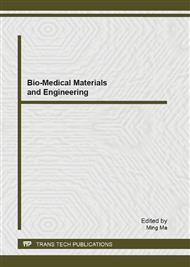p.566
p.571
p.576
p.582
p.588
p.591
p.597
p.603
p.606
Formation of Polyelectrolyte Brushes on Plate
Abstract:
The adsorption of polyelectrolyte chains on plate are studied using coarse-grained, bead-spring molecular models and Molecular dynamics computer simulation. It has been applied for studying the formation of polyelectrolyte brushes confined in the plates via the Lennard-Jones potential. The simulation result shows that the polyelectrolyte chains adsorption density is strongly affected by the length of the block carries the positive charge. Correspondingly, the counterions are added to the system. Upon changing the polyelectrolyte chain length N from 8 to 48, the profile of adsorption density decline between N=8 to N=18, and then rise. It has a minimum at N=18.These initial findings can be used as a guide for the preparation of actual polyelectrolyte brushes on plate by the adsorption approach.
Info:
Periodical:
Pages:
588-590
Citation:
Online since:
August 2013
Authors:
Keywords:
Price:
Сopyright:
© 2013 Trans Tech Publications Ltd. All Rights Reserved
Share:
Citation:


